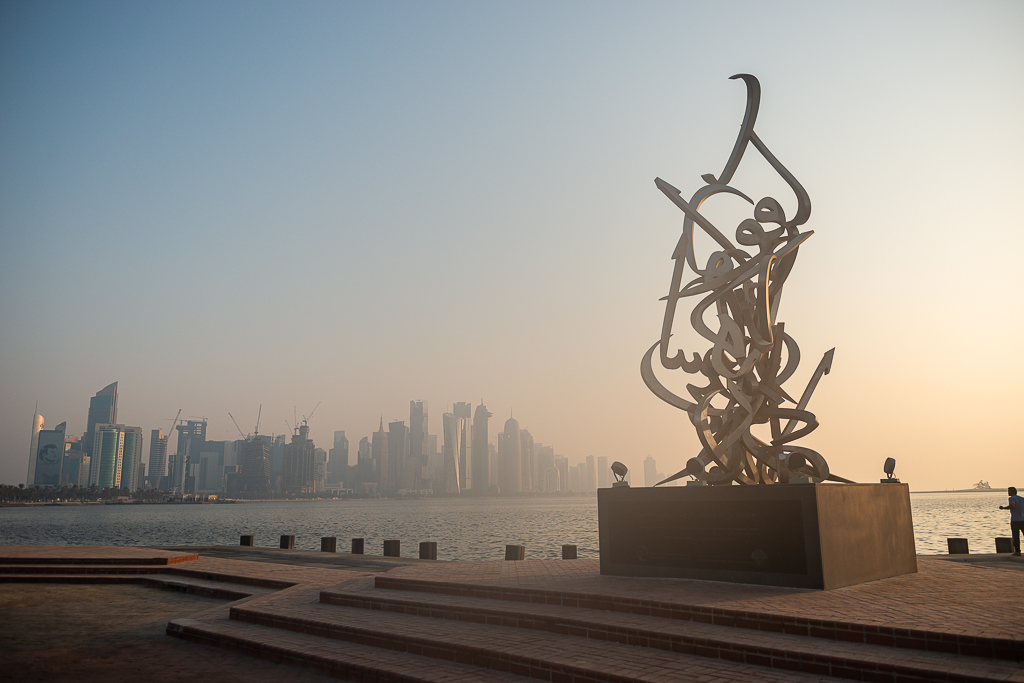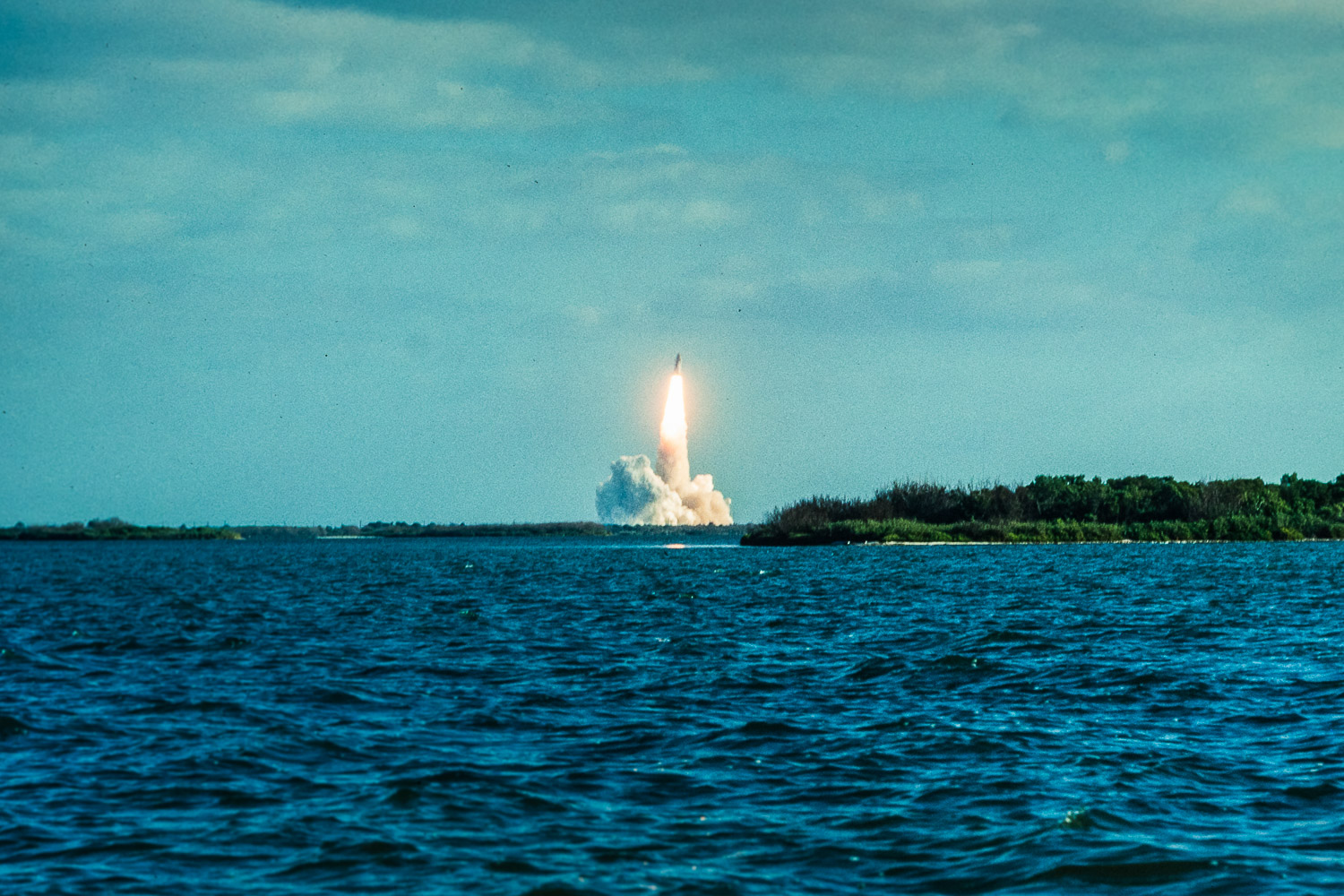Camping in the Okavango Delta – September 2017
The noise was deafening as 40 or 50 Vervet monkeys started shrieking loudly from the tops of a group of rain trees in Botswana’s Okavango Delta.
“Let’s go,” shouted our guide. “That’s the alarm call from the monkeys that there is a predator in the area.”
Moments later we spotted a year old male leopard running between the trees and tracked him for several minutes until he disappeared into thick bush.
Andrew Harkness, the guide/owner of the mobile safari company we were with, is in many ways a wildlife detective. He could interpret sights and sounds of wild animals and birds to lead us to Africa’s greatest predators.
Vultures are the easiest clue. Sometimes scores sit in trees surrounding a kill – where most often lions and leopards have taken down their prey. The predators sometimes remain in the area for days protecting their food. The vultures are waiting for the remains.
All told Harkness tracked about 50 lions for us as we drove about 2,000 km through the bush during our ten-day safari. The most dramatic was when a lion crossing a river narrowly missed being taken down by a lightening fast crocodile lunging at the lion’s back leg.








We have been lucky enough to have experienced safaris in many African countries over the years, at all price points, but loved this more than any – largely because we were living in the bush without any outside contact, apart from a satellite phone for emergencies.
There were six of us in the group, and British-born Harkness, 35, was our driver and owner of the company. His five-man crew would drive ahead of us in a separate vehicle and set up camp – and have a gourmet dinner waiting for us around a campfire by the time we arrived just after the sun had gone down.
They cooked unbelievable pasta and meat dishes every night along with an astonishing array of cakes and breads: all on a campfire or in an earth-oven. The food was finer than in many city restaurants.
At night we slept in canvas tents under the amazing star-lit African sky, watching the vivid lights of the Southern Cross. Lions roared and leopards prowled around the camp, but we felt remarkably safe despite only a thin layer of canvass separating us from Africa’s dangerous predators. Hyenas raided the camp kitchen most nights. But Harkness assured us they would never come into the tents. We believed him and slept well.
The tents were spacious, had comfortable cots with fresh linens every day. They were equipped with battery operated lamps and there was a separate zip-up room attached to the back of the tent with a wooden toilet and a shower – with hot water, heated on the campfire, poured into an overhanging bladder any time we needed it.



We chose Botswana for the abundant wildlife. Botswana has the largest herds of elephants on the continent because of its government’s shoot to kill poachers policy. Rangers spot poachers and kill them – and only ask questions later.
It is also a vast country with fewer tourists than East Africa. It means, for example, if you spot one of the Magnificent Seven – lions, leopards, cheetahs, wild (painted) dogs, elephants, Cape buffalo, and rhino – chances are you will be alone in your safari truck.
Compare that with East Africa, with so many more tourists, you might get 20 or more trucks around a lion sighting, for example.
Mobile safaris are cheaper, about half the price, than the conventional safari lodges where you fly in and out of. Not as luxurious certainly, but you have the advantage of driving in the bush for hours each day vastly increasing your exposure for animal sightings, which is, after all, the name of the game.
Harkness knows his species: including every single one of the 500 birds in the Delta. Never once was he stumped for an answer to our endless questions. Now 35, he left Harpenden in England when he was 18 to holiday in South Africa and discovered a passion for wildlife. Soon he was taking his guide training courses there before moving to Botswana, where he now lives with his wife and two small children in Maun – the gateway to the Okavango.
He has many battle stories to tell around the campfire: like the occasion when a hippo – the deadliest animal in Africa with huge incisors – tipped him out of the boat he was in. Fearing for his life, he somehow kicked the hippo and avoided other huge hippos in the water nearby to swim the 20 metres to shore.
The best time to visit Botswana is from late May through until early October when it starts to get unbelievably hot. Harkness, who has been in business for five years, takes between four and 15 people at a time. Generally there are six people in a nine-seat vehicle, allowing plenty of room for terrific game viewing.
He says it is becoming a perfect trip for corporate executives who want to get away from it all and “bond”. He says the amount of work done around the campfire at night can be remarkable once the executives have overcome their fear of camping under canvas in the wild.
{The price for a ten-day safari is about C$8,000 per person. You can book through Robyn Bentley of Personal Travel Management in Vancouver. Her number is: 604 739 3652. Email: RobynB@personaltravel.ca or check out Harkness Safaris.)
Because we are addicted to the bush, we had to have one more safari before saying goodbye to Africa, perhaps for our last visit! So after this one in Botswana – we flew via Johannesburg to two parks just outside Kruger in South Africa. It was our second visit to these parks – and also to the lodges we booked there.
Set within the Greater Kruger expanse on Klaserie Private Nature Reserve, nThambo Tree Camp is part of both the immense sprawl of South Africa’s most iconic national park and yet has the exclusivity of a private reserve.
With just five chalets – actually they are more like tree houses – this intimate camp focuses on the wilderness and all it has to offer, with early morning and late afternoon game drives. On this stay we saw several 3,000-pound rhinoceroses close up – an animal which is hard to even find in Botswana. We also spent a memorable day with lions on a fresh buffalo kill, with a pack of about 40 hyenas moving in once the lions had their fill. Our guide said he had never witnessed that many hyenas all at once, and it was truly remarkable to watch.
We also saw herds of very calm elephants, who came within a few feet of our safari truck, along with leopards and many African buffalo – so the Big Five within the space of three days. And dozens of vicious African wild dogs or painted dogs as they are often referred to – an animal which some wildlife experts want to see renamed as the African wolf.






Even better, there are so relatively few people around in the park you feel you feel you have the game all to yourself. But some our best sightings were in the camp itself. The watering hole and camp pool are popular with the area’s wildlife, especially the elephants, and we saw an elephant take a long drink from the camp’s swimming pool.
Set on stilts and accessed by wooden stairs, the wood and thatch camp buildings take you back to those magical days of treehouses, when you gazed across your private kingdom. And indeed, from this elevated vantage point, the views of the plains, the camp’s waterhole and the Drakensberg mountains in the distance are stupendous.
The five tree houses are spread out in front of the tree line. They are modestly sized, canvas-enclosed with a near 180-degree panorama from the bed, when the tent’s flaps are open.
Next, a four hour drive to the Idube Game Lodge in Sabi Sand. It offers a genuine bush experience on a 10,000-hectare private concession in the world-renowned and game-rich Sabi Sand Game Reserve. There are just nine en-suite rooms. My wife discovered it, and as we arrived our friends said: “You saved the best for last!” After several weeks in the bush, this was indeed comparative luxury.
Africa’s most well-known wildlife, including the Big 5, are often sighted while on safari in the early morning, late afternoon and early evening. One thing is for sure: the Sabi Sand never disappoints. Guided walks are also offered to give you the opportunity to learn about other aspects of the bush.
Down a wooden walkway, Idube Game Lodge’s suites take pride of place with views over the bushveld. The lounge deck overlooks the river bed and other facilities include an underground hide – with the iconic sign on the door: Beware of Leopards! And, yes, we saw all of the Big Five again during drives from this fabulous lodge.
Travelling from Canada to Botswana and South Africa, we broke our trip in Qatar, where the temperatures soared to close to 50 degrees centigrade when we arrived in late August. We had never been so hot.
Headquartered in Doha, where ancient souks meet modern consumerism, the city used to be a fishing and pearling town, now it’s a metropolis bearing all the hallmarks of Qatar’s immense oil wealth. Its rapid development means construction everywhere as the country was preparing to host the soccer World Cup.
There is little sign of that growth slowing down. The opening of the much-delayed Hamad International Airport has turned Doha into a fully-fledged Middle Eastern hub to rival Dubai, an accessible choice for stopovers.

The city itself demands a closer look. On the surface it is a sanitized capital, but delve a little deeper and you find a place that combines the consumerism of Dubai with a religiously conservative streak that is closer to its southerly neighbour, Saudi Arabia. It’s a fascinating, contradictory place, and expects an even bigger role on the global stage with the 2022 World Cup.


The Museum of Islamic Art is one of Doha’s biggest draws, and the building itself, designed by Chinese architect I M Pei (who created the Louvre’s glass pavilion), is the most striking in the city. Inside, the vast space is a clever mix of New York’s Guggenheim and Istanbul’s Yeni Camii mosque. The space means exhibits are given room to breathe, and the lighting creates a lovely sense of peace and escape, particularly when it is so hot outside.

Several times in the late evening we joined the locals for a stroll along the Corniche promenade, when the heat is bearable and there are soft breezes from the water.

Get out early before the day becomes too, too hot. It’s worth taking a city tour as the main sights are scattered. Highlights include a whizz along the Corniche, a stop-off to see the traditional wooden fishing dhows – an incongruous sight when set against the gleaming skyscrapers of West Bay. Have a peek around the Pearl development, an artificial island that is Qatar’s premier address, with malls brimming with couture, and a circular marina lined with some of the priciest real estate on the planet.
On our return journey – after our safaris in Southern Africa – we decided to take a break in the Seychelles, an island country spanning an archipelago of 115 islands in the Indian Ocean. The islands are either granite (the Inner islands) or coral islands (the Outer Islands).
These granitic and coral islands, around 1,100 miles from the Tanzanian coast, are wilder and less glossily perfect than the Maldives. But they are certainly alluring, with the attractions of surreal rock formations, lush forests and Creole heritage, as well as some of the world’s best beaches and cerulean seas.
The Seychelles Inner Island is the cultural and economic center of the Seychelles and also where the main tourist attractions are. We arrived at the airport of Mahé, and based ourselves there for nearly a week.
Seychelles has a warm all year round (32-24 degrees) climate, without extremes. The cuisine is like its people, a mix of traditions and flavours: French influences come together with the spiciness of the Indian dishes and the piquant flavours of the East.
One highlight was the UNESCO World Heritage Site at the Vallee de Mai on Praslin, believed to be the original site of the Garden of Eden. A walk there will allow you to see the coco de mer, with its uniquely shaped fruit in a palm forest which remains largely unchanged since prehistoric times. It is in the world’s largest population of endemic coco de mer, a flagship species of global significance as the bearer of the largest seed in the plant kingdom. The forest is also home to five other endemic palms and many endemic fauna species. The property is a scenically attractive area with a distinctive natural beauty. It was named a World Heritage Site in 1983.

We also took a ferry to La Digue, a 30 km boat ride from Praslin, La Digue is the laid-back, sleepier sibling to larger Seychelles islands Mahé and Praslin. Nobody ever seems in a hurry on this virtually motor-free island. Creole houses nestle under papaya trees, their window boxes and plant pots overflowing with flowers. Fishermen dawdle along the road carrying sticks hung with fish, while wooden pirogues glide across the water. There’s no airport on this tiny island, just 3 miles long and 2 miles wide.
It’s a 20-minute boat ride from nearby Praslin, and you approach to views across a stunning coastline of blonde beaches, fronds of palms and clusters of smoothed boulders. Our time was spent wandering along palm-dappled paths and between beaches with turquoise waters.


A reef wall runs adjacent to the western beaches, creating placid waters for swimming. Midway along the coast is L’Union Estate Farm, where you can see a traditional copra mill and plantation house, as well as a cemetery for the original vanilla-farming settlers.
Continue past the neat rows of vanilla vines (which were introduced by French settlers) and you’ll come to La Digue’s calling card: Anse Source d’Argent. Roughly translated as silver stream, the island’s — and, arguably, the Seychelles’ — most revered beach is a shimmering stretch of photogenic sand. It’s an unspoiled slip of beach interspersed with granite boulders that turn pink in the sunset.


To the southeast are Grand Anse and Petite Anse a pair of coves you reach by a hilly track from the back of La Reunion. A number of clearly marked walking trails run northward along the coastline, taking you to Pointe Petite Anse, a promontory with views over to Félicité Island and Ramos National Park.
Without question, these beaches are the most beautiful we have seen anywhere in the world. If there is a more idyllic spot on earth, we are yet to find it. We’ll be back.



